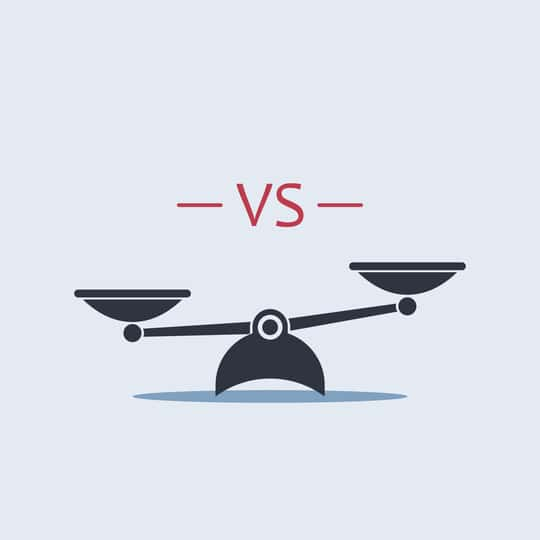Walgreens Boots Alliance, Inc. (WBA) in Deerfield, Ill., is a pharmacy-led health and beauty retail company. It operates through two segments—the United States and International. In comparison, Rite Aid Corporation (RAD) in Camp Hill, Pa., operates a chain of retail drugstores. It operates through two segments: Retail Pharmacy; and Pharmacy Services.
Pharmaceutical retailers should see high demand with the resurgence of COVID-19 cases worldwide. An aging population and increasing patient community with various chronic diseases are key growth drivers for the pharmaceutical industry. In addition, high government investment and continuing innovations in treating critical conditions should drive the industry’s growth. Also, the pharmaceutical sector is usually a steady performer, given the near-inelastic demand for its products. According to a report by Research and Markets, the global pharmaceuticals market is expected to grow at an 8% CAGR through 2025. Therefore, both WBA and RAD should benefit.
WBA stock has gained 8.6% in price over the past month, while RAD has returned 4%. Also, WBA’s 11.8% gains over the past three months compare to RAD’s negative returns. Moreover, WBA is the clear winner with 21.9% gains versus RAD’s negative returns in terms of the past year’s performance.
Click here to checkout our Healthcare Sector Report
But which of these two stocks is a better buy now? Let’s find out.
Latest Developments
On Jan. 6, 2022, WBA’s CEO Rosalind Brewer said, “The strong start to the fiscal year reinforces our confidence in the future, and as a result, we are raising our guidance for the full year and increasing investments in our people. Looking ahead, we are well positioned for sustainable, long-term value creation.”
On Dec. 21, 2021, Heyward Donigan, President, and CEO of RAD, said, “We are encouraged by our recent momentum and expect to deliver a significant increase in our fourth quarter adjusted EBITDA results compared to last year. As a result, we are raising our guidance for adjusted EBITDA for Fiscal 2022.”
Recent Financial Results
WBA’s sales increased 7.8% year-over-year to $33.90 billion for its fiscal first quarter, ended Nov. 30, 2021. The company’s adjusted operating income grew 48.6% year-over-year to $1.78 billion, while its adjusted net income came in at $1.59 billion, representing a 38.3% year-over-year increase. Also, its adjusted EPS was $1.68, up 37.7% year-over-year.
RAD’s revenues increased 1.8% year-over-year to $6.23 billion for its fiscal third quarter, ended Nov. 27, 2021. The company’s adjusted EBITDA grew 12.7% year-over-year to $154.80 million. However, its adjusted net income came in at $8.20 million, representing a 62% year-over-year decrease. Also, the company’s adjusted EPS was $0.15, down 62.5% year-over-year.
Past and Expected Financial Performance
WBA’s revenue and total assets have grown at CAGRs of 0.3% and 6.1%, respectively, over the past three years. Analysts expect WBA’s revenue to increase 0.1% for the quarter ending February 28, 2022, and 3.6% in fiscal 2023. The company’s EPS is expected to grow 11.1% for the quarter ending Feb. 28, 2022, and 3.2% in fiscal 2023. Furthermore, its EPS is expected to grow at 2.9% per annum over the next five years.
In comparison, RAD’s revenue and total assets have grown at AGRs of 4.1% and 5.5%, respectively, over the past three years. The company’s revenue is expected to increase 2.7% for the quarter ending Feb. 28, 2022 but decrease 1.4% in fiscal 2023. Its EPS is expected to grow 28.2% for the quarter ending Feb. 28, 2022 but decline 187.5% in fiscal 2023. Also, RAD’s EPS is expected to decrease at 3.7% per annum over the next five years.
Profitability
WBA’s trailing-12-month revenue is 5.43 times RAD’s. WBA is also more profitable, with gross profit and EBITDA margins of 21.18% and 4.04%, respectively, compared to RAD’s 20.49% and 1.64%.
Furthermore, WBA’s 2.72% and 3.80% respective ROA and ROTC are higher than RAD’s 0.66% and 0.90%.
Valuation
In terms of forward EV/EBITDA, RAD is currently trading at 13.87x, which is 12.7% higher than WBA’s 12.31x. However, WBA’s 0.62x forward EV/S ratio is 113.8% higher than RAD’s 0.29x.
POWR Ratings
WBA has an overall B rating, which equates to a Buy in our proprietary POWR Ratings system. In comparison, RAD has an overall C rating, which translates to Neutral. The POWR Ratings are calculated by considering 118 distinct factors, with each factor weighted to an optimal degree.
WBA has a B grade for Growth and Sentiment, which is consistent with analysts’ expectations that its EPS and revenue will increase in the coming years. In contrast, RAD has a C grade for Growth and a D grade for Sentiment, which are in sync with analysts’ expectations that its EPS and revenue will decline next year.
Also, WBA has a B grade for Value, consistent with its 12.31x forward EV/EBITDA, which is lower than the 12.54x industry average. However, RAD has a C grade for Value, which is in sync with its 13.87x forward EV/EBITDA. Which is 10.6% higher than the 12.54x industry average.
Of the four stocks in the A-rated Medical – Drug Stores industry, WBA is ranked second. In comparison, RAD is ranked last.
Beyond what I have stated above, we have also rated the stocks for Momentum, Quality, and Stability. Click here to view all the WBA ratings. Also, get all the RAD ratings here.
The Winner
The pharmaceutical industry is expected to grow with technological advances in healthcare infrastructure and drug development processes. And while both WBA and RAD are expected to gain, we think it is better to bet on WBA now because of its higher profitability and better growth prospects.
Our research shows that odds of success increase when one invests in stocks with an Overall Rating of Strong Buy or Buy. View all the other top-rated stocks in the Medical – Drug Stores industry here.
Click here to checkout our Healthcare Sector Report
Want More Great Investing Ideas?
WBA shares were trading at $54.02 per share on Friday afternoon, up $1.58 (+3.01%). Year-to-date, WBA has gained 3.57%, versus a -1.57% rise in the benchmark S&P 500 index during the same period.
About the Author: Nimesh Jaiswal

Nimesh Jaiswal's fervent interest in analyzing and interpreting financial data led him to a career as a financial analyst and journalist. The importance of financial statements in driving a stock’s price is the key approach that he follows while advising investors in his articles. More...
More Resources for the Stocks in this Article
| Ticker | POWR Rating | Industry Rank | Rank in Industry |
| WBA | Get Rating | Get Rating | Get Rating |
| RAD | Get Rating | Get Rating | Get Rating |






